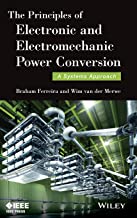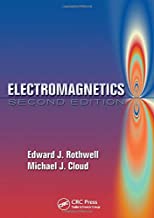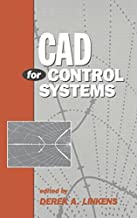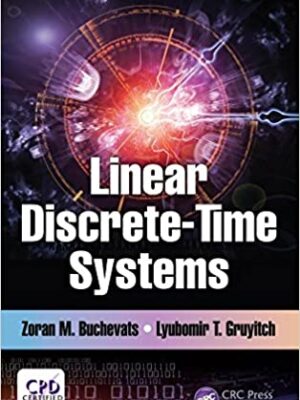The Principles of Electronic & Electromechanic Power Conversion: A Systems Approach
Original price was: ₹8,102.14.₹6,481.71Current price is: ₹6,481.71.
ISBN: 9781118656099
Author/Editor: Braham Ferreira
Publisher: John Wiley
Year: 2013
1 in stock (can be backordered)
Description
A top-down approach that enables readers to master and apply core principles
Using an innovative top-down approach, this text makes it possible for readers to master and apply the principles of contemporary power electronics and electromechanic power conversion, exploring both systems and individual components. First, the text introduces the role and system context of power conversion functions. Then the authors examine the building blocks of power conversion systems, describing how the components exchange power. Lastly, readers learn the principles of static and electromechanic power conversion.
The Principles of Electronic and Electromechanic Power Conversion opens with a chapter that introduces core concepts in electrical systems and power conversion, followed by a chapter dedicated to electrical power sources and energy storage. Next, the book covers:
Power, reactive power, and power factor
Magnetically coupled networks
Dynamics of rotational systems
Power electronic converters
DC machines
AC machines
The text offers readers a concise treatise on the basic concepts of magnetic circuits. Its simple approach to machines makes the principles of field-oriented control and space vector theory highly accessible. In order to help readers fully grasp power electronics, the authors focus on topologies that use a series transistor and diode combination connected to a DC source, a standard building block of today? power conversion systems. Problem sets at the end of each chapter enable readers to fully master each topic as they progress through the text.
In summary, The Principles of Electronic and Electromechanic Power Conversion provides the most up-to-date, relevant tools needed by today? power engineers, making it an ideal undergraduate textbook as well as a self-study guide for practicing engineers.
Additional information
| Weight | 0.606 kg |
|---|
Product Properties
| Year of Publication | 2013 |
|---|---|
| Table of Contents | PREFACE xi 1 INTRODUCTION TO ELECTRICAL SYSTEMS AND POWER CONVERSION 1 1.1 Electricity as an Energy Carrier 1 1.2 Development of Electrical Energy Conversion Systems 4 1.3 System Building Blocks 6 1.4 Guide to the Book 7 1.4.1 Generation, Storage and Consumption of Electricity 8 1.4.2 Power Transfer and Matching of Loads and Sources 8 1.4.3 Electromechanics 9 1.4.4 Power Electronics 9 Problems 9 2 ELECTRICAL POWER SOURCES AND ENERGY STORAGE 11 2.1 Introduction 11 2.2 Primary Sources 12 2.2.1 Centralised Sources 12 2.2.2 Decentralised Sources 17 2.3 Secondary Sources 20 2.3.1 Basic Concepts 20 2.3.2 Storage as Chemical Energy Hydrogen 23 2.3.3 Storage as Electrochemical Energy 23 2.3.4 Storage as Electrical Energy 25 2.3.5 Storage as Mechanical Energy 26 2.4 Highlights 29 Problems 30 3 POWER, REACTIVE POWER AND POWER FACTOR 35 3.1 Introduction 35 3.2 Power in DC Circuits 36 3.3 Power in Resistive AC Circuits 38 3.4 Effective or rms Values 39 3.5 Phasor Representation 41 3.6 Power in AC Circuits 45 3.6.1 Power in a Capacitive Circuit 46 3.7 Apparent Power, Real Power and Power Factor 49 3.8 Complex Power 50 3.9 Electrical Energy Cost and Power Factor Correction 52 3.10 Fourier Series 56 3.11 Harmonics in Power Systems 60 3.12 Power and Non-Sinusoidal Waveforms 61 3.13 Effective or rms Value of Non-Sinusoidal Waveforms 65 3.14 Power Factor of Non-Sinusoidal Waveforms 66 3.15 Harmonics in Power Systems 70 3.16 Three-Phase Systems 73 3.17 Harmonics in Balanced Three-Phase Systems 75 3.18 Highlights 77 Problems 80 Further Reading 82 4 MAGNETICALLY COUPLED NETWORKS 85 4.1 Introduction 85 4.2 Basic Concepts 85 4.2.1 Ampere s Circuital Law 86 4.2.2 Faraday s Induction Law 87 4.2.3 Relationship between Magnetic Flux and Magnetic Field Strength 89 4.2.4 Inductance 93 4.2.5 Basic Magnetic Circuits 95 4.2.6 Magnetic Circuit with an Air Gap 99 4.3 Mutual Inductance 101 4.3.1 Simple Air-Core Transformer 103 4.3.2 Leakage Flux and the Transformer Core 104 4.4 Ideal Transformer 112 4.4.1 Referral of an Impedance 113 4.4.2 Leakage and Magnetising Inductances 114 4.5 Highlights 118 Problems 120 Further Reading 121 5 DYNAMICS OF ROTATIONAL SYSTEMS 123 5.1 Introduction 123 5.2 Preliminaries 124 5.3 Rotational Dynamics 127 5.3.1 Torque 127 5.3.2 Angular Displacement, Speed and Acceleration 128 5.3.3 Equations of Rotational Motion 129 5.3.4 Moment of Inertia 129 5.3.5 Rotating System 130 5.4 Coupling Mechanisms 133 5.4.1 Belt and Pulley 134 5.4.2 Gears 136 5.5 Highlights 138 Problems 140 Further Reading 140 6 POWER ELECTRONIC CONVERTERS 141 6.1 Introduction 141 6.2 Linear Voltage Regulator 142 6.3 Switched Approach 145 6.4 Basic Assumptions 150 6.4.1 Switching Components 150 6.4.2 Linear Components 150 6.5 Buck Converter 152 6.5.1 State I 153 6.5.2 State II 154 6.5.3 Combining the Two States 154 6.5.4 Simplified Analysis Approach 155 6.5.5 What if vc(t) Vc? 157 6.6 Discontinious Conduction Mode 162 6.6.1 Boundary between CCM and DCM 162 6.6.2 Relationship between Vs and Vc in DCM 164 6.7 Other Basic Converter Structures 169 6.7.1 Boost Converter 169 6.7.2 Buck Boost Converter 171 6.8 DC DC Converters with Isolation 172 6.8.1 Coupled Inductor Isolation: Flyback 173 6.8.2 Transformer Isolation: Half-bridge 178 6.8.3 Transformer Isolation: Full-bridge 182 6.9 Highlights 187 Problems 189 Further Reading 193 7 SIMPLE ELECTRICAL MACHINES 195 7.1 Introduction 195 7.2 Motional Voltage and Electromagnetic Force 196 7.2.1 Conductor Moving in a Uniform Magnetic Field 196 7.2.2 Current-Carrying Conductor in a Uniform Magnetic Field 201 7.2.3 Right-Hand Rule 204 7.3 Simple Linear DC Machine 204 7.3.1 Starting of the Linear DC Motor 206 7.3.2 Linear DC Machine Operating as a Motor 207 7.3.3 Linear DC Machine Operating as a Generator 208 7.3.4 Electrical Equivalent Circuit of the Linear DC Machine 209 7.3.5 Mechanical Equivalent Circuit of the Linear DC Machine 211 7.3.6 A Practical Example: The Railgun 211 7.4 Basic Operation of the DC Machine 214 7.4.1 Induced Voltage 214 7.4.2 Mechanical Voltage Rectification 217 7.4.3 Force and Torque 219 7.4.4 Power Balance between Mechanical and Electrical Power 221 7.4.5 The benefit of a Uniform Air Gap 223 7.5 Practical DC Machine Construction 224 7.5.1 Induced Voltage in a Real DC Machine 225 7.5.2 Torque Produced in a Real DC Machine 227 7.6 Practical DC Machine Configurations 231 7.6.1 Permanent Magnet DC Machine 234 7.6.2 Field Winding DC Machines 240 7.6.3 Losses 244 7.7 DC Machine as a Component in a System 246 7.8 Highlights 248 Problems 250 Further Reading 252 8 AC MACHINES 253 8.1 Introduction 253 8.2 Three-Phase AC Electrical Port 253 8.3 AC Machine Stator 256 8.3.1 Rotating Magnetic Field 257 8.3.2 Reversing the Direction of Rotation 260 8.3.3 Increasing the Number of Poles 261 8.3.4 Flux Created in the Air Gap 262 8.3.5 Induced Voltage in Three-Phase Stator Windings 266 8.3.6 Increasing the Number of Poles 268 8.3.7 Changing the Magnitude of the Induced Voltage 269 8.4 Synchronous Machine 271 8.4.1 The Equivalent Circuit 273 8.4.2 Phasor Diagram 275 8.4.3 Power Angle Characteristic Equation 276 8.4.4 Controlling the Power Factor 278 8.5 Induction Machine 281 8.5.1 Induced Currents in the Induction Machine Rotor 281 8.5.2 Development of an Equivalent Circuit 287 8.5.3 Measurement of the Induction Machine Parameters 291 8.5.4 Performance Calculations 293 8.5.5 Induction Motor as a Component in a System 297 8.6 Highlights 299 Problems 302 Further Reading 304 INDEX 305 |
| Author | Braham Ferreira |
| ISBN/ISSN | 9781118656099 |
| Binding | Hardback |
| Edition | 1 |
| Publisher | John Wiley |
You must be logged in to post a review.






Reviews
There are no reviews yet.